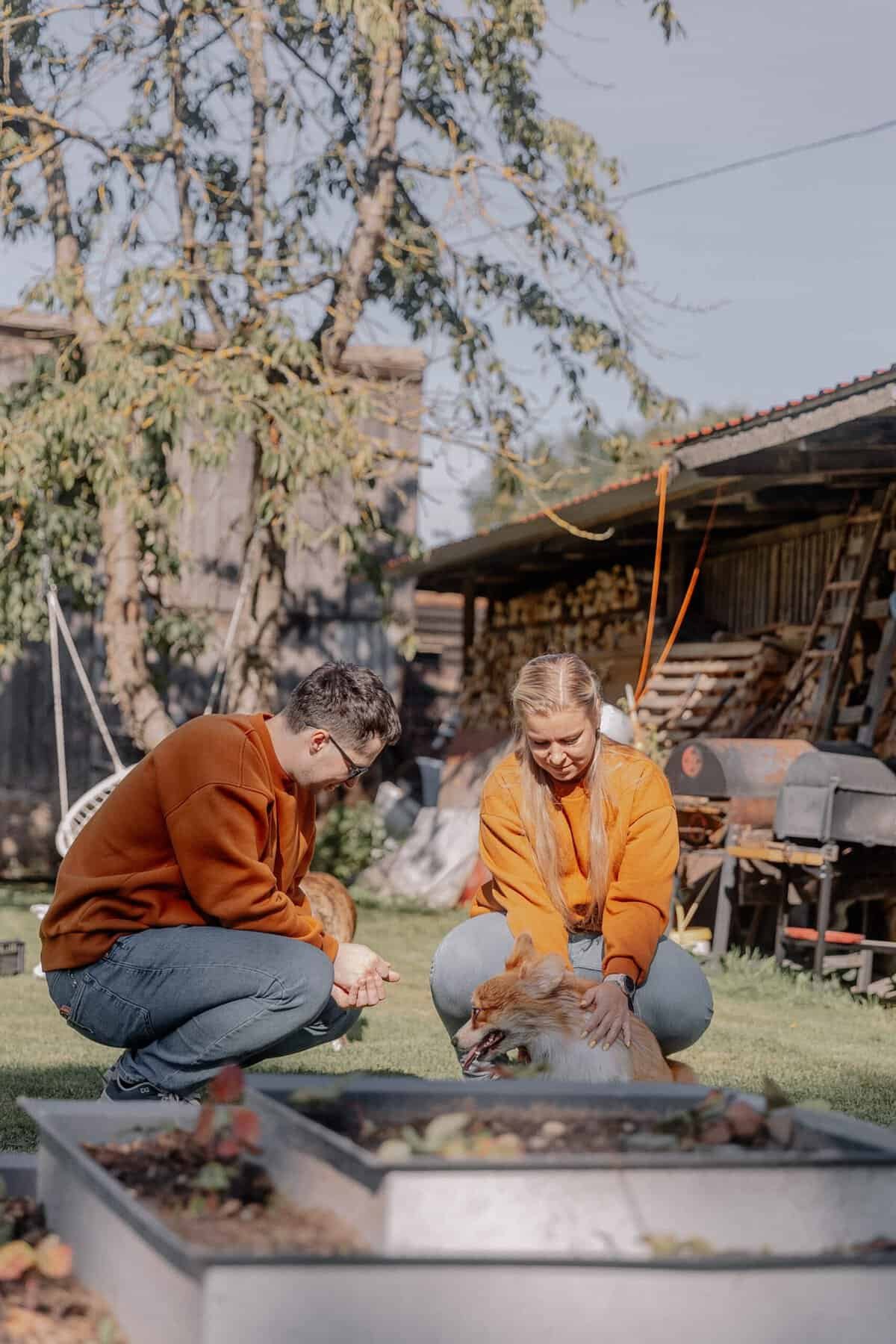Have you ever wondered how the material of a basketball backboard can influence the quality of play? The type of material used for the backboard can have a significant impact on the game, affecting the bounce of the ball, the sound it makes upon impact, and even the durability of the board itself. In this article, we’ll explore the various backboard materials and their effects on the overall playing experience. Whether you’re a seasoned basketball player or simply curious about the sport, understanding the relationship between backboard material and gameplay can provide fascinating insights into the game’s nuances.
Types of Backboard Materials
When it comes to basketball backboards, there are several materials to choose from, each with its own unique properties and characteristics. The choice of backboard material can greatly impact the quality of play, as it affects various factors such as ball rebound, shatter resistance, durability, cost, maintenance, installation process, weather resistance, noise level, and aesthetic appeal. In this article, we will explore the different types of backboard materials and their impact on the game.
Tempered Glass
Tempered glass is often considered the gold standard for basketball backboards due to its excellent ball rebound. The smooth and rigid surface of tempered glass provides consistent and true rebounds, allowing for precise shots and accurate gameplay. This material is commonly used in professional basketball arenas, where the highest level of play is expected.
In terms of shatter resistance, tempered glass is known for its durability. It is designed to withstand strong impacts and is less likely to shatter or break compared to other materials. This makes it a safe and reliable option, especially in high-intensity games where players may collide with the backboard.
Durability is another advantage of tempered glass. With proper maintenance and care, a tempered glass backboard can last for many years without losing its quality or performance. However, it is worth noting that tempered glass is more prone to damage from extreme weather conditions, such as hail or strong winds.
In terms of cost, tempered glass backboards are generally more expensive compared to other materials. This is due to the manufacturing process and the high-quality glass used. However, the investment is often worth it for serious players or those looking to replicate a professional basketball experience.
When it comes to maintenance, tempered glass backboards require minimal upkeep. Simply wiping them clean with a damp cloth is usually sufficient to keep them in good condition. However, it is important to avoid using harsh chemicals or abrasive materials that could scratch or damage the glass.
Installation of a tempered glass backboard can be more complex compared to other materials. Due to its weight and fragility, professional installation is often recommended to ensure proper mounting and stability. This can add to the overall cost, but it is essential for safety and optimal performance.
Tempered glass backboards are generally weather-resistant and can withstand various weather conditions. However, extreme temperature changes or exposure to harsh elements over a long period of time can potentially weaken the glass, so it is advisable to protect the backboard with a cover when not in use.
In terms of noise level, tempered glass backboards tend to produce a satisfying and resonant sound when the ball hits the surface, which many players appreciate. This adds to the overall experience and can enhance the excitement of the game.
Lastly, in terms of aesthetic appeal, tempered glass backboards are often favored for their sleek and professional look. They offer a clear and unobstructed view of the game, enhancing the overall visual experience for both players and spectators.
Acrylic
Acrylic backboards are another popular choice for basketball enthusiasts. They offer good ball rebound and are commonly found in outdoor recreational settings, such as parks or residential driveways. While not as high-performing as tempered glass, acrylic backboards provide a decent level of playability.
In terms of shatter resistance, acrylic is less durable compared to tempered glass. It is more prone to cracking or breaking upon strong impacts, especially when exposed to extreme temperature changes. Therefore, caution should be exercised to avoid damaging the backboard.
Durability-wise, acrylic backboards are generally sturdy and can withstand regular use. However, they are more susceptible to wear and tear over time compared to tempered glass. Scratches or scuff marks may appear on the surface, which can potentially affect the ball rebound and overall gameplay.
From a cost perspective, acrylic backboards are more affordable compared to tempered glass. They provide a suitable option for those on a tighter budget or casual players who do not require the highest level of performance.
Maintenance of acrylic backboards is relatively simple. Regular cleaning with mild soap and water can help remove dirt or debris, and it is important to avoid using harsh cleaning agents that could damage the surface. Checking for any signs of wear or damage is also recommended to ensure the backboard remains in good condition.
Installation of an acrylic backboard is generally straightforward and can be done by following the manufacturer’s instructions. The lightweight nature of acrylic makes it easier to handle and mount, reducing the need for professional installation.
When it comes to weather resistance, acrylic backboards are designed to withstand various weather conditions. They are typically UV-resistant and can handle exposure to sunlight or rain without significant deterioration. However, prolonged exposure to extreme weather conditions can still have an impact on the longevity of the backboard.
In terms of noise level, acrylic backboards produce a slightly different sound compared to tempered glass. While not as resonant, the sound is still satisfying to many players and adds to the overall experience of the game.
Aesthetically, acrylic backboards offer a clean and modern look. They are often translucent or clear, providing a good view of the game. While not as sleek as tempered glass, acrylic backboards can still add a touch of style to any basketball court.

Polycarbonate
Polycarbonate backboards are known for their durability and impact resistance. They are commonly found in recreational centers, schools, or gyms where durability is key. While the ball rebound may not be as good as tempered glass or acrylic, polycarbonate backboards offer a reliable option for players of all skill levels.
In terms of shatter resistance, polycarbonate is highly durable and can withstand strong impacts without breaking or cracking. This makes it a safe choice, especially for environments where rough play or collisions may occur.
Durability-wise, polycarbonate backboards are extremely tough and can handle regular use without significant wear or damage. They are less prone to scratching compared to acrylic, which enhances their longevity and overall performance.
From a cost perspective, polycarbonate backboards are generally more affordable than tempered glass but may be slightly more expensive than acrylic. They provide a good balance between quality and price, making them a popular choice for recreational players or institutions with budget constraints.
Maintenance of polycarbonate backboards is relatively simple. Regular cleaning with mild soap and water is sufficient to keep the surface clean and free from debris. It is important to avoid using abrasive materials or harsh chemicals that could damage the material.
Installation of a polycarbonate backboard is similar to acrylic and can usually be done following the manufacturer’s instructions. The lightweight nature of polycarbonate makes it easy to handle and mount, reducing the need for professional installation.
When it comes to weather resistance, polycarbonate backboards are designed to withstand various weather conditions. They are generally UV-resistant and can handle exposure to sunlight or rain without significant deterioration. However, extreme temperature changes or prolonged exposure to harsh weather conditions may still impact the lifespan of the backboard.
In terms of noise level, polycarbonate backboards produce a similar sound to acrylic. While not as resonant as tempered glass, the sound is still satisfactory to many players and adds to the overall experience of the game.
Aesthetically, polycarbonate backboards offer a clean and modern look. They are often translucent or clear, allowing for good visibility of the game. While not as sleek as tempered glass, polycarbonate backboards provide a practical and durable option.
Fiberglass
Fiberglass backboards are known for their durability and flexibility. They are commonly found in outdoor recreational areas or community courts due to their ability to withstand the elements. While not as high-performing as tempered glass or acrylic, fiberglass backboards provide a reliable option for outdoor play.
In terms of ball rebound, fiberglass backboards may have a slightly lower performance compared to other materials. However, they still offer a decent level of playability, making them suitable for casual or recreational games.
Shatter resistance is one of the notable advantages of fiberglass. It is highly durable and can withstand strong impacts without breaking or cracking. This makes it a safe option, especially in areas where rough play or collisions may occur.
Durability-wise, fiberglass backboards are designed to be weather-resistant and can handle exposure to sunlight, rain, or extreme temperatures without significant deterioration. This makes them an ideal choice for outdoor settings where durability is a priority.
From a cost perspective, fiberglass backboards are generally more affordable compared to tempered glass or polycarbonate. They provide a budget-friendly option for those looking for a durable and weather-resistant backboard.
Maintenance of fiberglass backboards is relatively simple. Regular cleaning with mild soap and water can keep the surface clean and free from debris. It is important to avoid using abrasive materials that could scratch or damage the fiberglass.
Installation of a fiberglass backboard is similar to other materials and can usually be done following the manufacturer’s instructions. The lightweight nature of fiberglass makes it easy to handle and mount, reducing the need for professional installation.
In terms of noise level, fiberglass backboards produce a sound similar to acrylic or polycarbonate. While not as resonant as tempered glass, the sound is satisfactory to many players and contributes to the overall experience of the game.
Aesthetically, fiberglass backboards offer a practical and functional look. They are often solid in color and may not have the same sleek appearance as tempered glass or acrylic. However, fiberglass backboards provide a durable and weather-resistant option for outdoor play.

Wood
Wooden backboards are a classic choice that is often associated with a traditional and nostalgic feel. They are commonly found in older basketball courts or recreational areas, adding a touch of charm and character to the playing environment. However, wooden backboards have become less common in modern basketball facilities due to their limitations in performance and durability.
In terms of ball rebound, wooden backboards may not offer the same level of playability as other materials. The surface can be inconsistent, leading to unpredictable rebounds and potentially affecting the overall quality of play.
Shatter resistance is one of the drawbacks of wooden backboards. Wood is a natural material and is more prone to cracking or splintering upon strong impacts. This can pose a safety risk, especially in high-intensity games or environments where rough play may occur.
Durability-wise, wooden backboards may not be as long-lasting as other materials. They are susceptible to rot, warping, or damage from pests, moisture, or extreme weather conditions. Regular maintenance and protection are required to prolong their lifespan.
From a cost perspective, wooden backboards can vary in price depending on the quality of the wood and craftsmanship. While they may be more affordable compared to tempered glass or acrylic, the cost of ongoing maintenance and potential replacement should be taken into consideration.
Maintenance of wooden backboards is essential to keep them in good condition. Regular cleaning, sealing, and periodic inspections are necessary to prevent rot, warping, or other forms of damage. It is important to note that wooden backboards require more time and effort in terms of maintenance compared to other materials.
Installation of a wooden backboard can be more labor-intensive compared to other materials. Proper support structures, such as posts or brackets, must be securely installed to ensure stability. Professional installation may be recommended to ensure the backboard is mounted correctly and safely.
In terms of weather resistance, wooden backboards are more susceptible to damage from moisture, sun exposure, or extreme temperature changes. Regular sealing or weatherproofing is necessary to protect the wood and extend its lifespan.
When it comes to noise level, wooden backboards produce a unique sound when the ball hits the surface. The distinctive “thud” adds to the nostalgic and traditional feel of the game.
In terms of aesthetic appeal, wooden backboards provide a classic and timeless look. They evoke a sense of nostalgia and can add a rustic charm to any basketball court. While not as sleek or modern as other materials, wooden backboards have their own distinct appeal.
Aluminum
Aluminum backboards are a lightweight and durable option commonly found in outdoor recreational areas or community parks. They offer a good balance between performance, durability, and cost, making them a popular choice for various playing environments.
In terms of ball rebound, aluminum backboards provide a decent level of playability. While not as high-performing as tempered glass or acrylic, they offer a reliable surface for casual or recreational games.
Shatter resistance is one of the notable advantages of aluminum. It is highly durable and can withstand strong impacts without breaking or cracking. This makes it a safe option, especially in areas where rough play or collisions may occur.
Durability-wise, aluminum backboards are designed to be weather-resistant and can handle exposure to sunlight, rain, or extreme temperatures without significant deterioration. This makes them an ideal choice for outdoor settings where durability is a priority.
From a cost perspective, aluminum backboards are generally more affordable compared to tempered glass or polycarbonate. They provide a budget-friendly option for those looking for a durable and weather-resistant backboard.
Maintenance of aluminum backboards is relatively simple. Regular cleaning with mild soap and water can keep the surface clean and free from debris. It is important to avoid using abrasive materials that could scratch or damage the aluminum.
Installation of an aluminum backboard is similar to other materials and can usually be done following the manufacturer’s instructions. The lightweight nature of aluminum makes it easy to handle and mount, reducing the need for professional installation.
In terms of noise level, aluminum backboards produce a sound similar to acrylic or polycarbonate. While not as resonant as tempered glass, the sound is satisfactory to many players and contributes to the overall experience of the game.
Aesthetically, aluminum backboards offer a sleek and modern look. They are often powder-coated or painted to provide a clean and durable finish. While not as visually striking as tempered glass, aluminum backboards provide a practical and long-lasting option.


